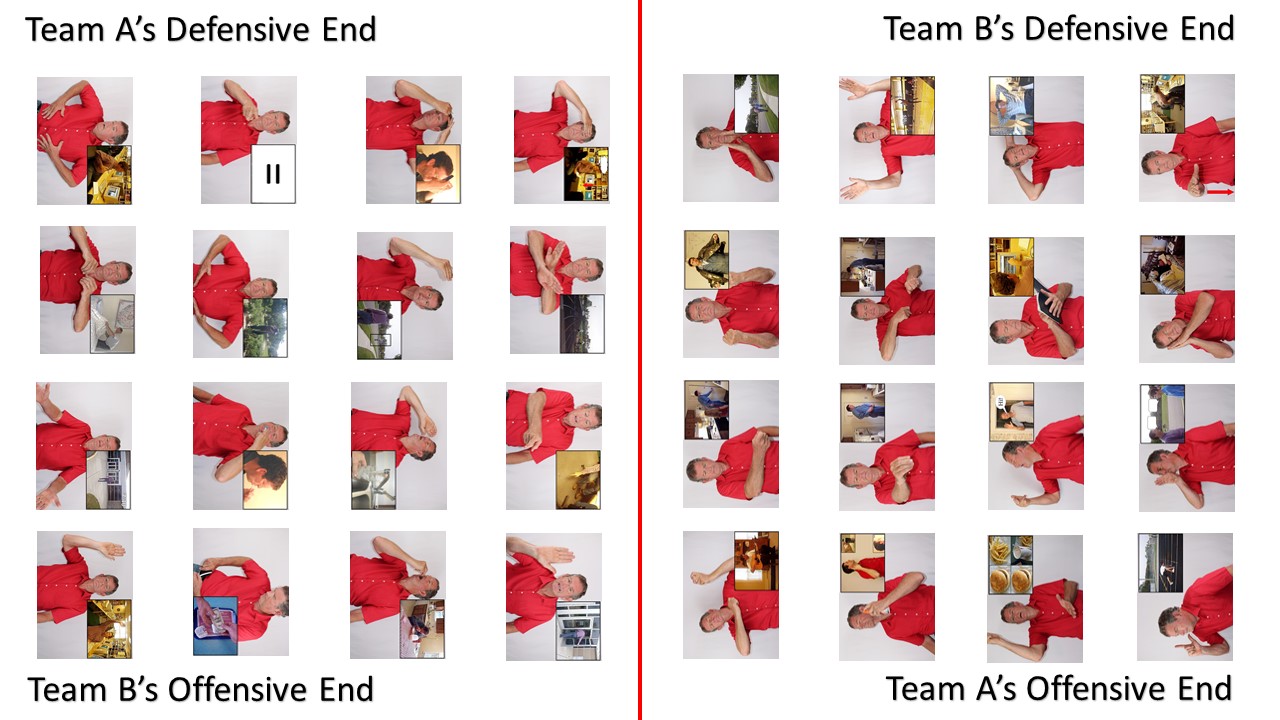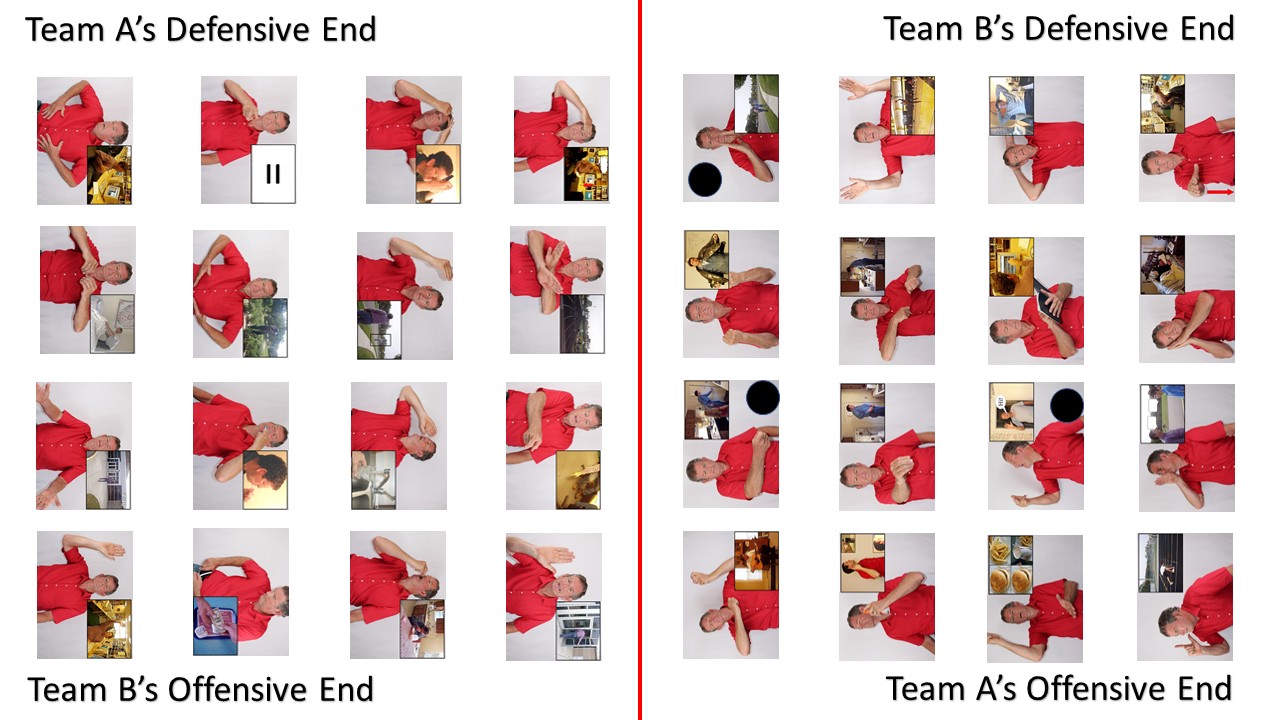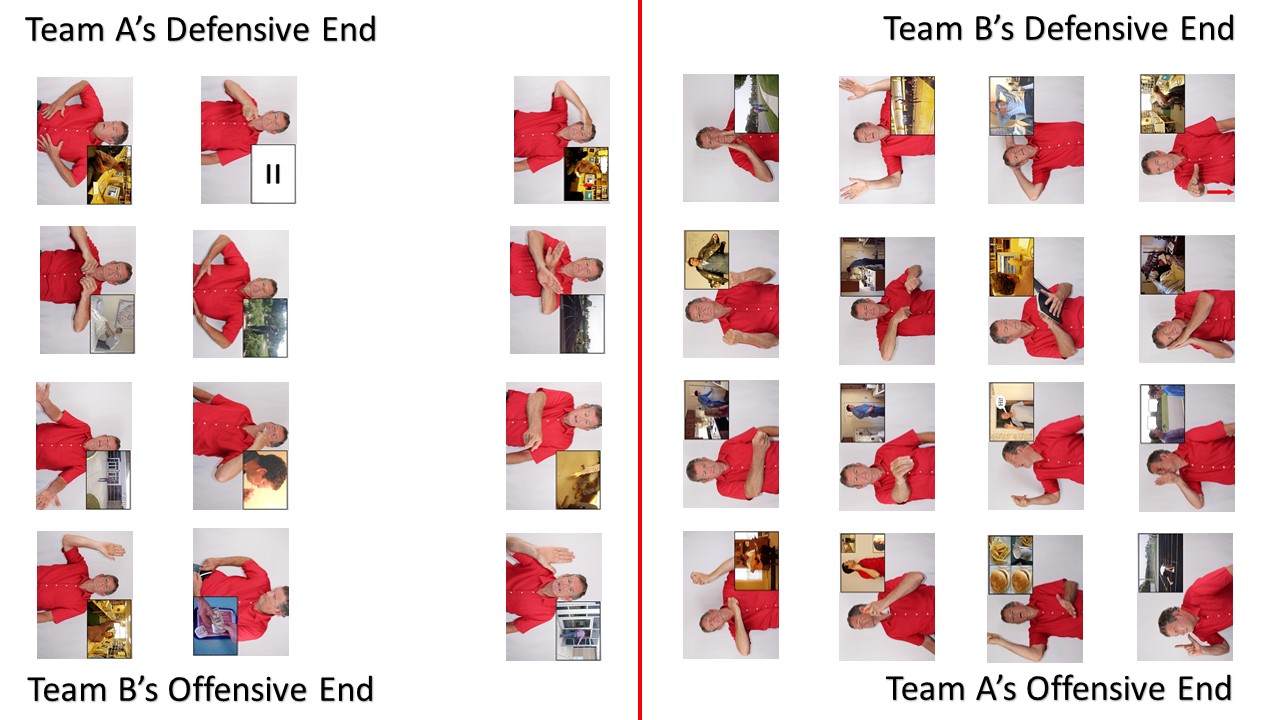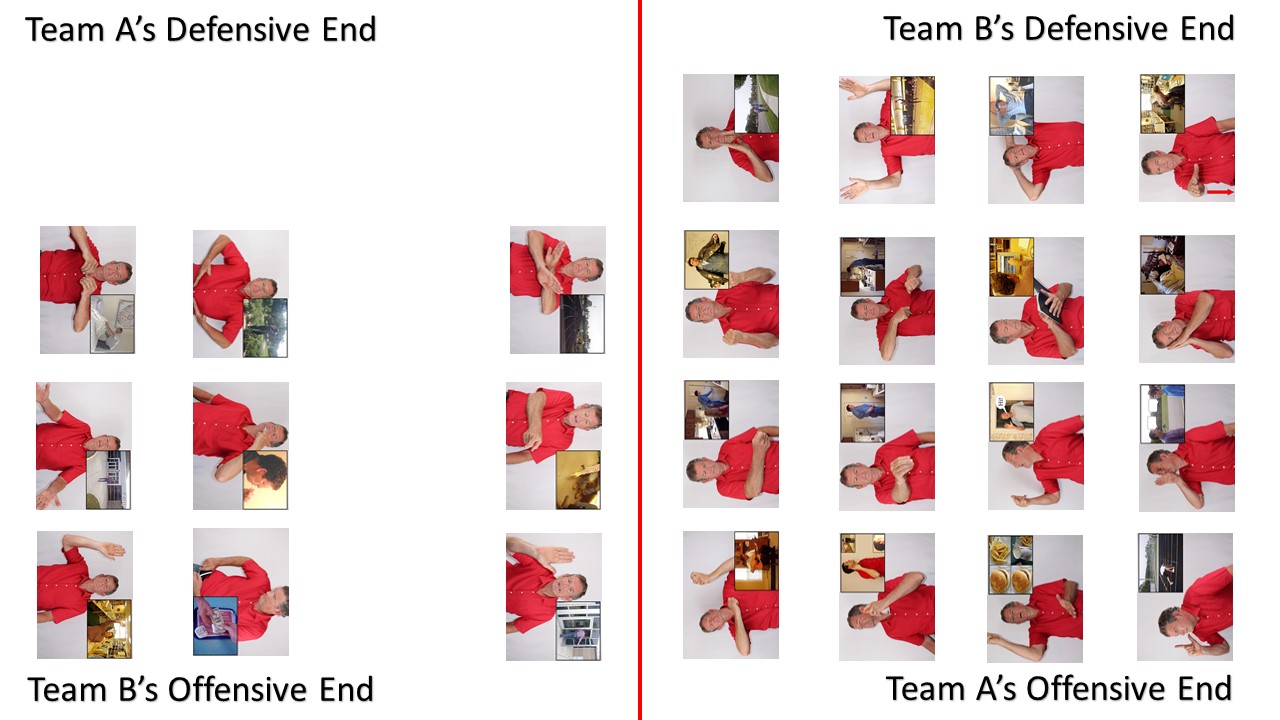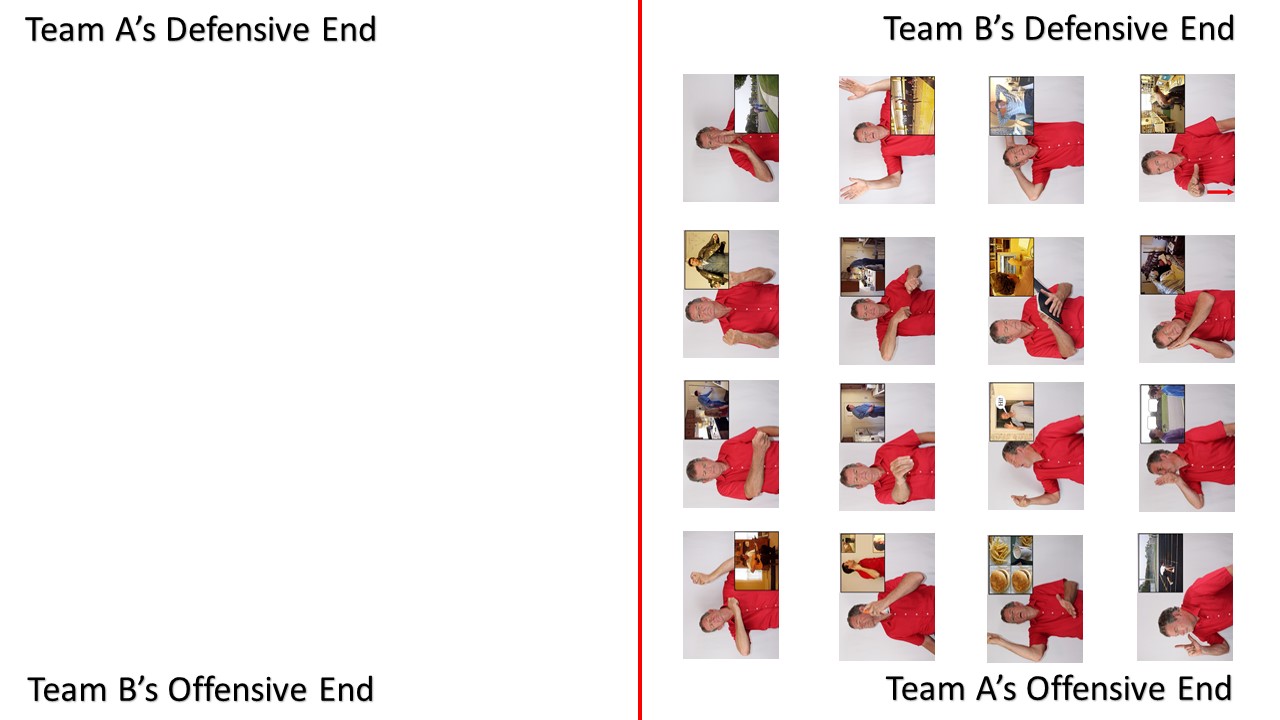Flashcard Vocabulary Review
This game serves to review vocabulary using flashcards you have created of key ULAT images. It requires a minimum of two opponents, although it can also be played between two teams whose players take turns participating, and it is typically played on a tabletop. Here is how it is played:
Divide the flashcards equally between the two teams.
The two teams select which half of the tabletop will be the end they are defending.
The teams then place their flashcards in straight rows on their defensive end, and facing their end, such as in the diagram seen below.
Each team has a defensive end and an offensive end. The goal of the game is to remove all of the opponents' cards from the table.
One of the teams, chosen at random or by the flip of a coin, is selected to begin. Its first player then has five seconds to point at a card at the opponents' defensive end and and to say the word that corresponds to that flashcard. If the student takes more than 5 seconds, the student loses his or her turn and the turn passes to the other team. However, if the student is correct, some sort of marker (a penny?) is placed on that card and the same student is allowed to continue by pointing at another card at the opponents' defensive end and by saying the word (also within 5 seconds). If he is correct, a marker is placed on that card and the student continues until the student either takes more than 5 seconds or makes a mistake, at which point the turn to speak goes to the other team.
A player from Team A accurately identifies three of Team B's cards (note the three black markers), within the 5-second time limit each time, then makes a mistake and it is now Team B's turn.
Before being allowed to "attack" the opponents' defensive end, a team must first "defend" its own end. The team must first "remove" all of the markers from the cards at their defensive end. The student whose turn it is to speak does this by pointing at one of his team's own cards, which carries a marker, and by saying the corresponding word. If correct, the marker is removed and the student continues on to the next "marked card" on his or her team's defensive end. Once he has removed the markers from all of his team's cards, he may attack at the other end. If he fails to do so, the turn reverts to the opponents, who can begin attacking again. (Remember this general principle: a team must defend its own end successfully, having removed all of the markers on its cards, before being allowed to attack at the other end.)
Once an attacking team is able to mark an entire vertical or horizontal row on its opponent's defensive side, that entire row of cards is removed from the table. Once an attacking team has removed the last row of cards on its opponent's defensive end, the game is over and the attackers are the winners.
A player from Team B first accurately identifies his three cards at his team's defensive end (note that the three black markers have been removed). Now, having defended his end and having removed all of the markers on his cards, he can now "attack". In fact, he does so well that he accurately points at and says all four cards in the second row on Team B's side. Having removed an entire row of cards, he is allowed to remove that row from the table. Then, after he makes a mistake, it is Team A's turn again.
Team A immediately makes a mistake by taking more than 5 seconds to speak, thus making it Team B's turn again. The next player on Team B accurate names the three cards located at the "top" of his attacking end and, as there were only 3 cards left in that row, is allowed to remove that row from the table.
Once an attacking team is able to mark an entire vertical or horizontal row on its opponent's defensive side, that entire row of cards is removed from the table. Once an attacking team has removed the last row of cards on its opponent's defensive end, the game is over and the attackers are the winners.
The game ends when one team has removed all of its opponents' cards.
